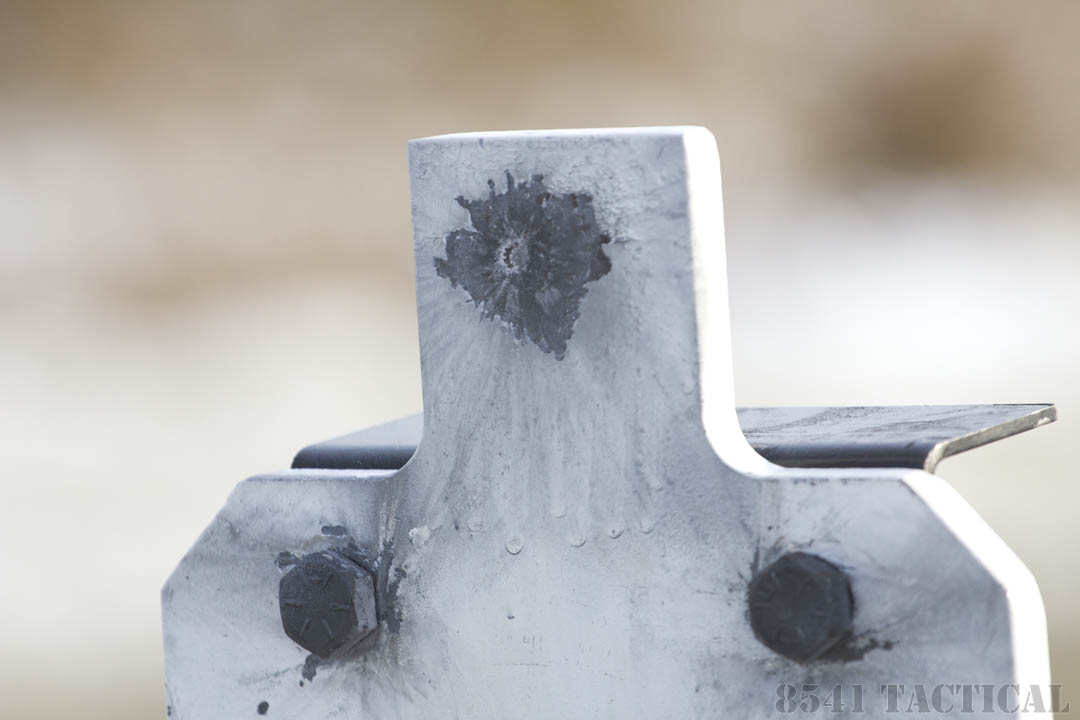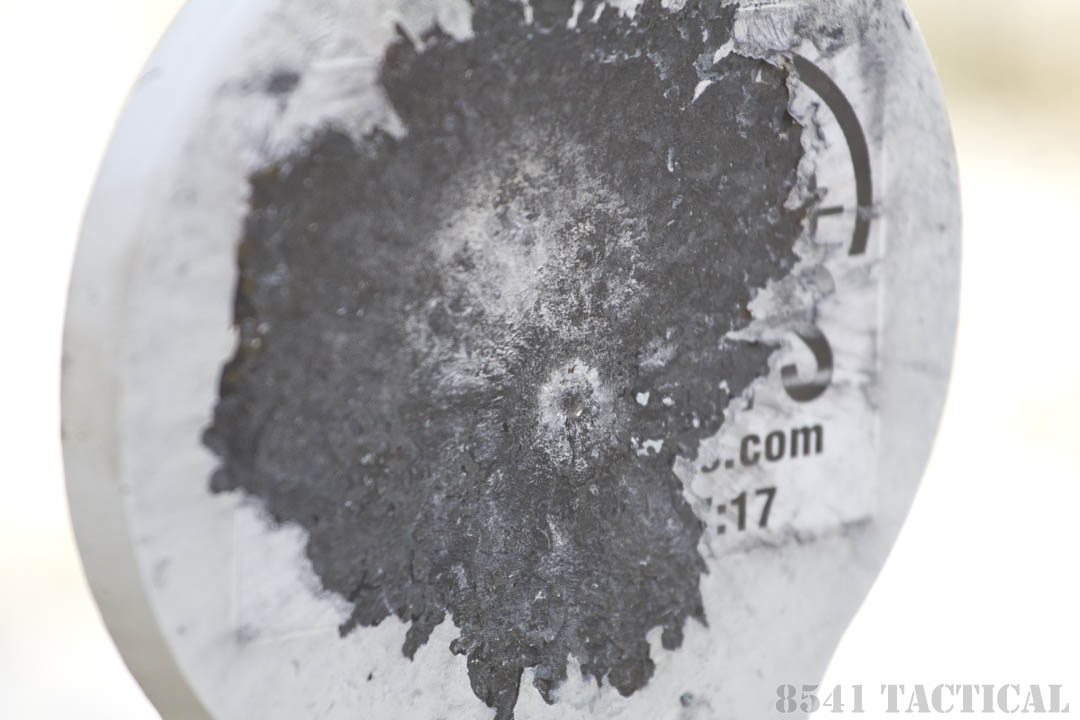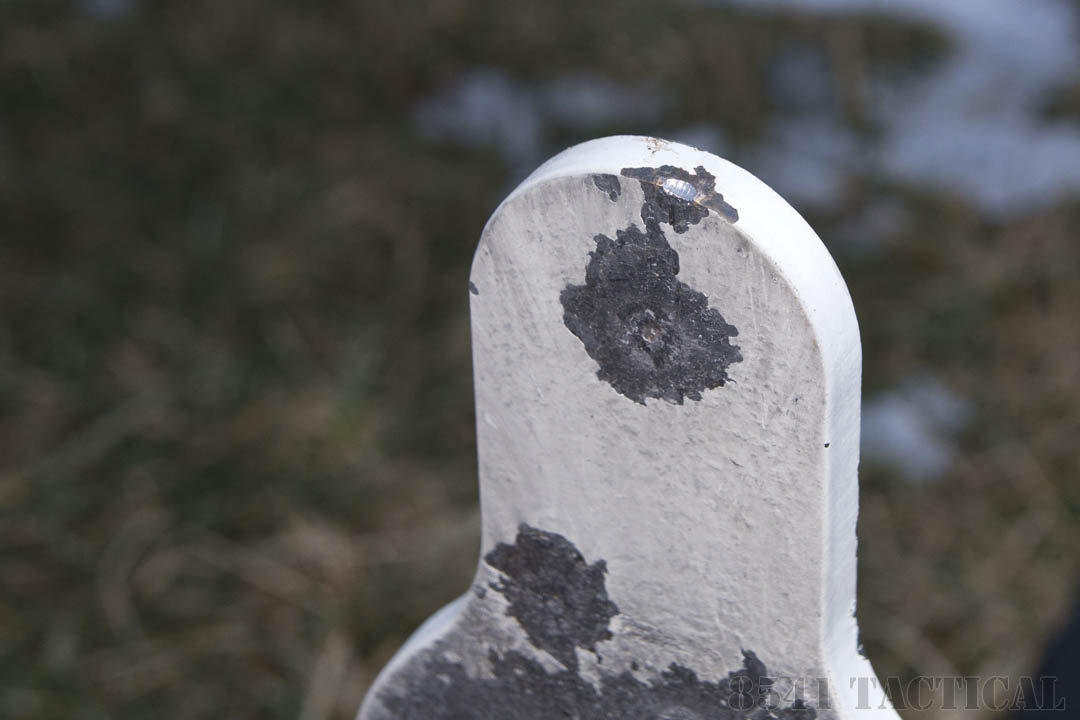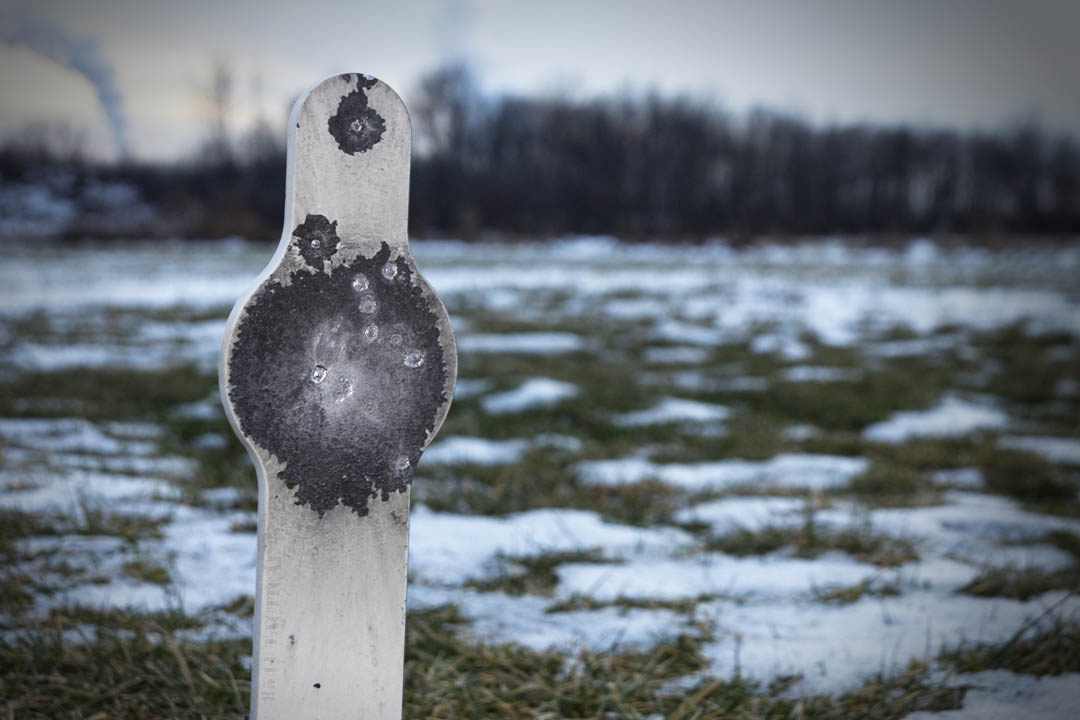I shoot a lot of steel. It may be during rifle or optics testing, a national level match or just having fun. I can say that at least 60% of the ammo I fire is at a steel plate of some sort. Because of this I was very excited when Jake Vibbert from JC Steel Targets asked me to take a look at their products.
JC Steel Targets sent us two different target styles. The first is a standard IPSC shaped silhouette. This one is 45% the size of a standard IPSC target. The reduced size is much better for precision rifle shooting at intermediate ranges. The target is 3/8" thick and constructed of AR500 steel. AR500 is the minimum that I recommend for rifle steel. You can get away with lower grade for pistol and rimfire targets, but rifle bullets will sail right through. The thickness is sufficient for .308 class calibers. If we were going to use these for .300WM and up I would prefer the 1/2" thick versions. While you are not going to have a bullet penetrate 3/8", you will over time have the target bend.
Our 45% IPSC came attached to JC Steel Targets new "T-Post" Bracket. This bracket is a very simple design. It bolts through the two holes in the target plate and allows the use of a simple "T" style fence post. These are cheap and available at most hardware stores. The lovely part about this design is you can set the posts in and leave them. If they are damaged or stolen, they are cheap to replace. Just don't forget a fence post driver. It will make your life easier.

Boom, Headshot!
|
Since the bracket attaches by two through bolts, I do suggest you keep extras on hand. A good hit on the head will blow a bolt out. It's not a big deal to replace, but if you don't have a couple extras it will take that target out of service.
One design change that should be noted. On newer plates the mounting holes have been moved lower to better shield the top of the bracket. In the photo above you can just barely see the edge of the bracket above the shoulders. On our test target the bracket took a grazing hit from a miss over the shoulder. It did not damage the bracket, but left a nice copper streak. |
The second target that JC Steel Targets send us was their Spring Back Pepper Popper. I love reactive steel. There is just something incredibly fun about watching a plate slam down and then rise back up again just asking for another dose of lead.
The JC Steel Targets Pepper Popper is a very simple design. A heavy duty base, hinge plate, a double spring and the plate. The target face is just a flat piece of AR500. This means that after thousands of rounds if your popper starts to take a curve, you can flip it over. Just like the 45% IPSC the two mounting bolts are exposed, so bring spares. If a guy sends a shot low (and this happens often at matches) he could punch out a bolt. |

Five rounds of 168gr Black Hills Gold just blew the paint off.
|

55gr .223 right on the edge |
All of the JC Steel Targets are laser cut. This is important. There are many ways to cut steel, but only a few that don't damage the heat treating. The best is water jet because it does not impart any heat on the work piece. The equipment is not cheap. Laser cutting still uses heat to cut, but the heat does not extend into the piece like a plasma cutter or torch would. We can see this when we hit the plate right on the edge. This happens pretty often with poppers and when the wind starts blowing. On the JC Spring Back Popper we nailed it right on the edge and only ended up with a slight ding. This will occur even on water jetted plates because there just isn't enough steel there. |
I took both targets out to the range and set them up on the 100 yard line. Most steel shooting is done at longer ranges, but I wanted to really beat these up and see if I could break a weld or shear off any hardware. 100 yards is what I consider minimum safe for rifles on steel. If you are going to shoot any closer than that, you should be using frangible ammo and gear up with some armor (torso and head).
The rifles I brought for the test were simple. On the "average" end I bought a Accuracy International AX308. On the "worst case" end, I brought a 20" AR15. The ammo for the AX308 was Black Hills Gold 168gr Amax and also some hot 168gr Handloads. The AR15 was launching Federal American Eagle 55gr FMJ.
| Velocity is what kills steel. You hit a plate with a slow moving high energy round and not even scratch the face. You may break welds and brackets, but you are not going to hurt the actual strike face. A very light, very fast bullet will tear up steel fast. This is exactly what we saw with out little 100 yard test. The .308 rounds only succeeded in knocking the paint off, although they did slam the popper back with authority. The .223 dimpled the surface, but it was exactly what I expected to see with AR500 and is the same degree as on any other rifle steel plate I have shot at the same range. Move them back a couple hundred yards and you have no problem at all. |
 A mix of .223 and .308. The .308 blows the paint off but the .223 dimples it. A mix of .223 and .308. The .308 blows the paint off but the .223 dimples it.
|
Overall the JC Steel Targets offer a great product at a great value. The Spring Back Pepper Poppers retail for $98 each shipped to your door. They come broken down, but assembly is easy with a ratchet set and adjustable wrench. The 45% IPSC plate in 3/8" AR500 runs $42.75 (shipping extra). The T-Post brackets will cost you $17-20 depending on the hole spacing you need for a specific plate. The breakdown on their website makes with fairly simple to figure out. In addition, they don't try to rob you for shipping. $18 will cover up to 70lbs by USPS Priority. Once in awhile they will run a group buy with free shipping. Our local shooting group ordered several hundred pounds of steel during the last one.
|
|
You can try to go the "cheap" route and have local shops cut steel for you, but very often it just doesn't work out to be cheaper. To get the right steel you often have to buy a whole sheet. If you can't afford a sheet and just use what the shop has, the target may not survive a single shoot. I have done it and ended up regretting not purchasing from a company that just makes targets.
JC Steel Targets is not your average company. They are a business venture of the Jubilee Youth Ranch. Jubilee Youth Ranch is a Residential Program for "at risk" youths. The program teaches them skills in a faith based atmosphere to give them to the tools to succeed in life. All of JC Steel Targets products are designed, packed and shipped. The proceeds from the sales go directly back to Jubilee. Not only are you getting a great product, you are helping kids succeed in life. |
For more info and pricing, check JC Steel Targets Website.
|


